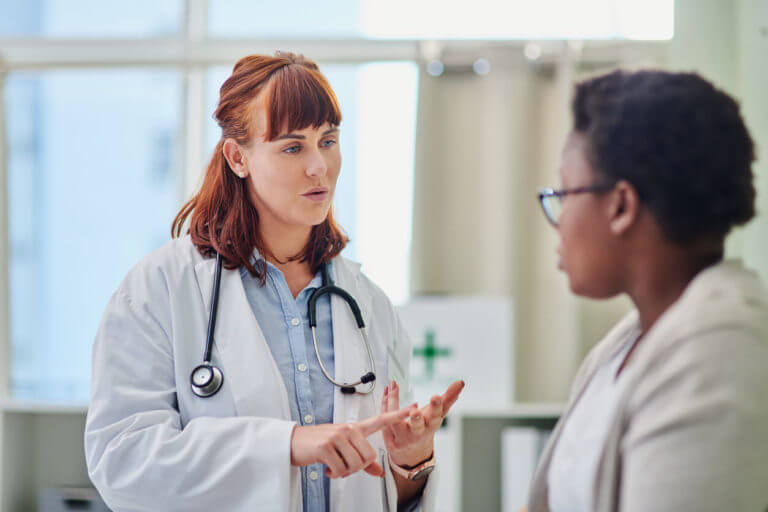
Endometriosis is a complex condition that affects millions of women worldwide, especially individuals between the ages of 25 and 40. But still, it remains one of the most misunderstood and underdiagnosed issues in women’s health.
Characterized by the growth of tissue similar to the uterine lining outside the uterus, endometriosis can lead to debilitating pain, irregular menstruation, and even infertility. Despite its prevalence, many continue to live with symptoms for years before receiving a proper diagnosis.
Let’s demystify endometriosis by offering a clear, simple explanation of its causes, symptoms, and various treatment options available.
Understanding Endometriosis
It is a condition that occurs when tissue similar to the lining inside the uterus, known as the endometrium, starts growing outside the uterus. These growths can appear on the ovaries, fallopian tubes, the outer surface of the uterus, and other organs within the pelvis, such as the intestines, bladder, and ureters.
Unlike the endometrial tissue that exits the body during menstruation, the tissue growing outside the uterus cannot leave the body.
Causes of Endometriosis
The exact cause of endometriosis is still unknown, but it is believed to be caused by:
Retrograde Menstruation
In retrograde menstruation, some menstrual blood flows back through the fallopian tubes into the pelvic cavity instead of leaving the body. This can cause the endometrial cells to stick to the pelvic walls and organs, where they grow and bleed over time.
Transformed Peritoneal Cells
Hormonal or immune factors may convert peritoneal cells, which line the abdomen’s interior, into cells similar to those inside the uterus, contributing to endometriosis development.
Embryonic Cell Changes
Estrogen and possibly other hormones can cause embryonic cells to develop into endometrial-like cell growths during puberty.
Endometrial Cell Transport
The body’s blood vessels or lymphatic system may transport endometrial cells to distant parts of the body, where they grow.
Immune System Disorder
An inadequacy in the immune system could prevent it from recognizing and destroying endometrial-like tissue outside the uterus.
Symptoms of Endometriosis
Symptoms of endometriosis can vary widely in intensity, with some women experiencing severe symptoms and others having none at all. The most common symptoms include:
- Pelvic pain, especially associated with menstruation
- Pain during intercourse
- Excessive bleeding during or between periods
- Infertility
- Infertility
- Fatigue, diarrhea, constipation, bloating, or nausea, particularly during menstruation
Treatment Options
While there is currently no cure for endometriosis, several treatment options can help manage symptoms:
Pain Management
Pain, often the most debilitating symptom of endometriosis, can range from mild to severe. Over-the-counter pain relievers like ibuprofen (Advil, Motrin IB) are the first line of defense in managing menstrual cramps and pelvic pain associated with endometriosis.
For more severe pain, OB/GYN may prescribe stronger medication, including opioid analgesics, although these are used cautiously due to potential dependence and side effects.
Hormone Therapy
The growth of endometrial-like tissue is often fueled by hormones, particularly estrogen. Hormone therapy aims to reduce or temporarily halt menstruation, creating an environment that slows the growth of endometrial tissue and, as a result, reduces or eliminates symptoms. Treatment options include:
Birth Control Pills
These can help regulate or eliminate periods, reducing the severity of pain associated with endometriosis.
Gonadotropin Releasing Hormone (GnRH) Agonists and Antagonists
These drugs reduce estrogen levels, which can prevent menstruation and reduce endometriosis-related pain. However, they may have menopause-like side effects, which are often managed with small doses of estrogen or progestin.
Progestins
Progestin therapy, including the levonorgestrel-releasing intrauterine device (IUD), contraceptive implants, pills, and injections, can stop periods. This halt in menstruation also slows the growth of endometrial tissues, providing relief from pain.
Surgery
For individuals who don’t respond to medication or those experiencing significant pain, fertility issues, or other complications, surgery may be recommended.
Conservative surgery aims to remove or destroy endometrial growths while preserving the uterus and ovaries. This is often done via laparoscopy, a minimally invasive procedure that can reduce pain and enhance fertility prospects.
In severe cases, and when no future pregnancy is desired, more extensive surgery such as hysterectomy (removal of the uterus) and oophorectomy (removal of the ovaries) might be considered. However, these procedures have significant long-term implications and are viewed as a last resort.
Fertility Treatment
Endometriosis can be a major cause of infertility. Depending on the situation, fertility treatments ranging from medications to stimulate ovulation to assisted reproductive technologies like in vitro fertilization (IVF) may be explored.
Consulting an OB/GYN can provide guidance tailored to the individual’s condition and fertility goals.
Lifestyle Changes
Adopting a healthier lifestyle can mitigate some symptoms of endometriosis. Regular exercise, a balanced diet rich in omega-3 fatty acids, and maintaining a healthy weight may help reduce estrogen levels and improve symptoms.
Endometriosis in West Orange, New Jersey
At Hudson MD Group in West Orange, New Jersey, we have a team of OB/GYNs who understand the complexities of managing endometriosis and are dedicated to providing comprehensive care tailored to your unique needs. Whether you’re seeking pain relief, fertility solutions, or expert surgical options for endometriosis, our team is here to support you every step of the way.
If you would like to learn more about us or want to schedule a consultation, call us directly at (973) 705-4914 or fill out our Request an Appointment form.
We look forward to serving you!


